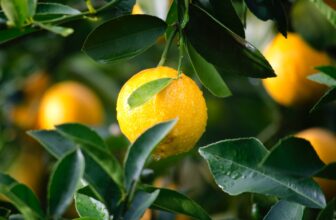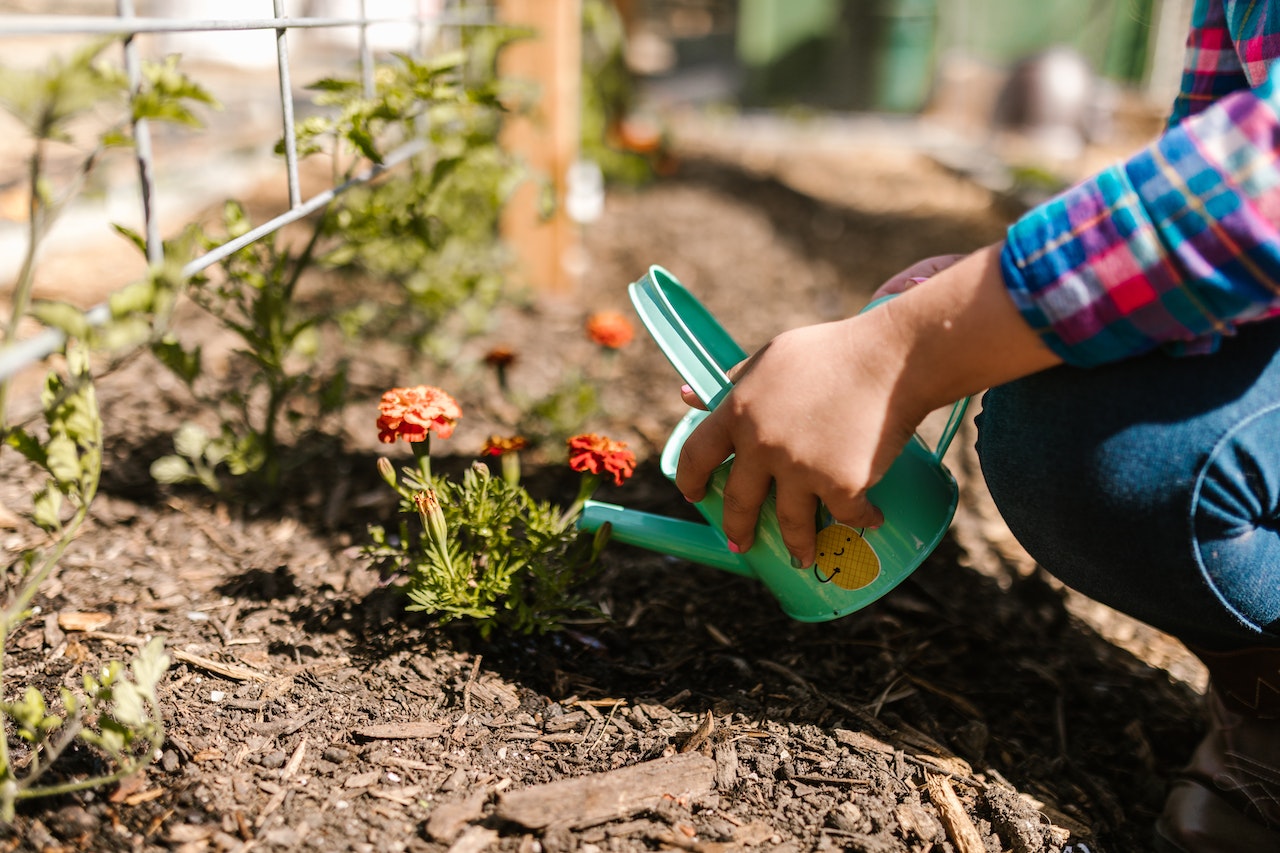
Table of Contents
Brown mulch is a type of ground cover material that’s often used in landscaping and gardening. It’s typically made from shredded wood chips or bark and is used to cover the surface of garden beds and other areas of the landscape.
But beyond its aesthetic appeal, is brown mulch actually useful in the garden? In this article, we’ll take a look at the benefits and potential drawbacks of using brown mulch in your garden, as well as some factors to consider when choosing this type of mulch.
Whether you are a seasoned gardening pro or new to the world of mulch, this information can help you make an informed decision about whether brown mulch is right for your landscape.
What is Brown Mulch?
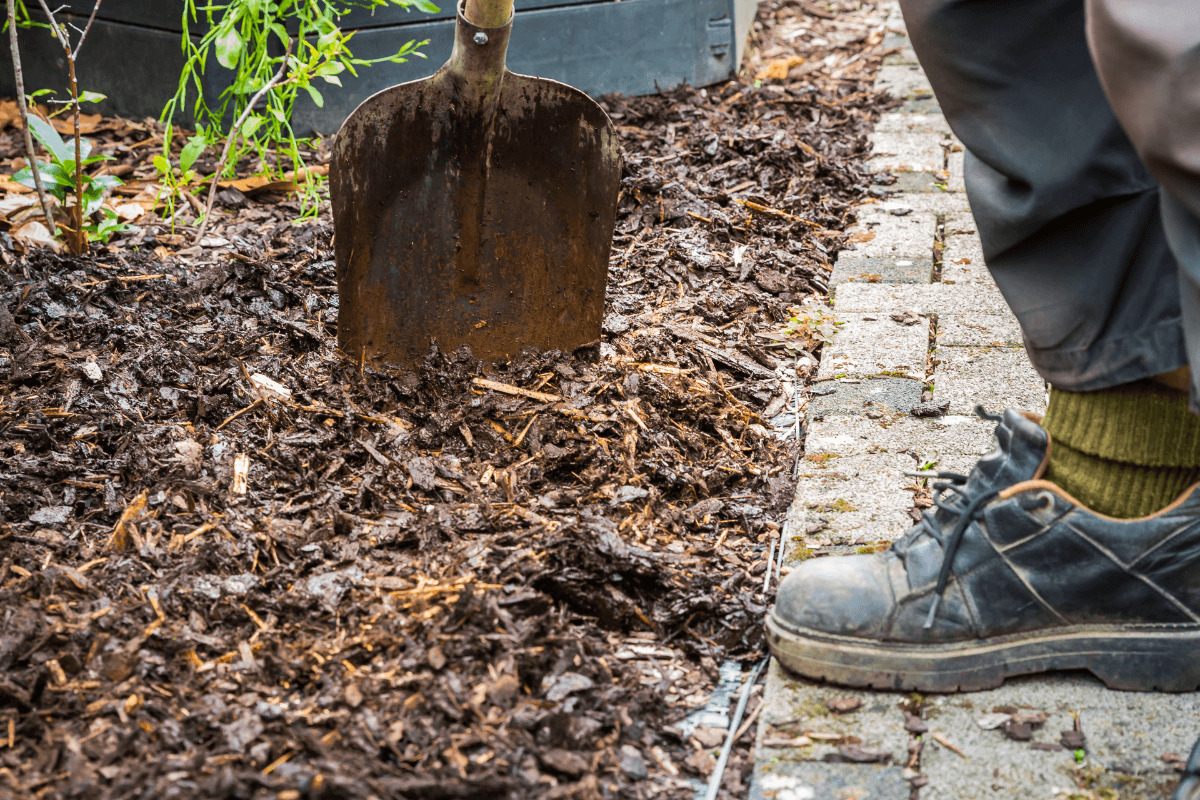
Brown mulch is a type of mulch that is typically made from wood chips or bark and is used in landscaping and gardening. It’s called “brown” because of its natural, earthy color. Mulch is used for a variety of purposes, including helping to retain soil moisture, controlling weeds, and adding visual interest to gardens and landscaped areas.
Brown mulch is a popular choice because it blends well with a variety of plants and landscaping styles, and it is relatively inexpensive.
How is Brown Mulch Made?
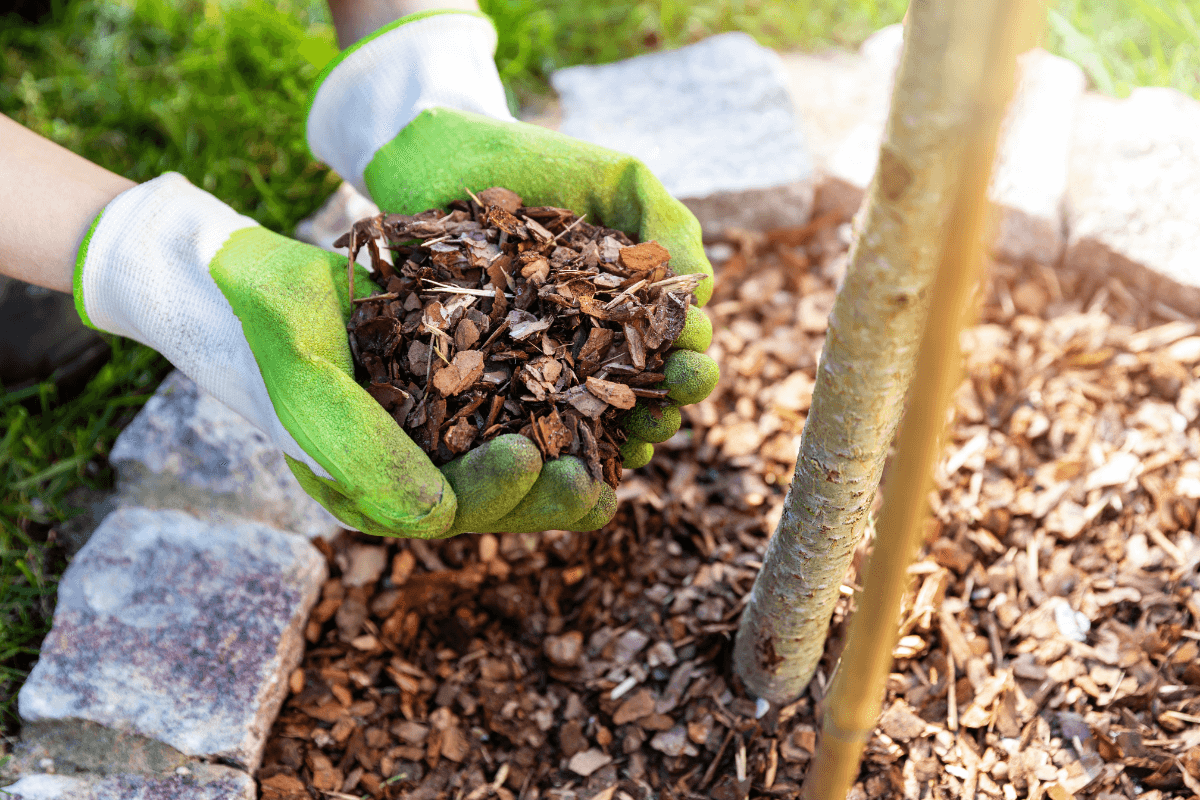
Brown mulch is typically made from wood chips or bark that has been ground or shredded into small pieces. The wood chips or bark can come from a variety of sources, including trees that have been removed during construction or land clearing projects, or trees that have been trimmed or pruned.
To make brown mulch, the wood chips or bark is first ground or shredded into small pieces using a chipper or shredder. The resulting material is then screened to remove any large pieces or debris, and it’s typically aged or cured for some time to allow it to dry and stabilize.
After the mulch has been cured, it’s ready to be packaged and sold to consumers. Some manufacturers may also add dyes or other colorants to the mulch to give it a more consistent appearance or to enhance its color.
The Pros and Cons of Brown Mulch
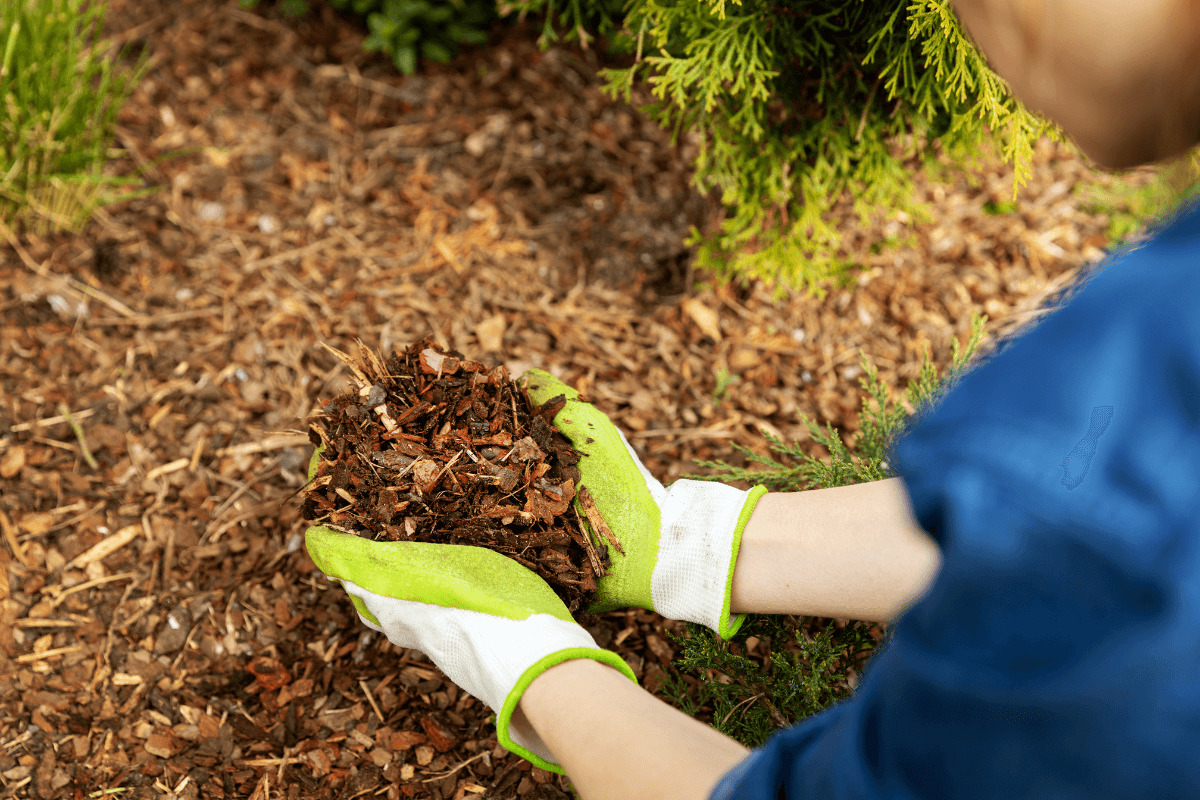
There are both advantages and disadvantages to using brown mulch in your garden or landscaped areas and it’s important to be aware of these if you’re planning to use it. Let’s start with the pros.
Pros of Using Brown Mulch
- Natural appearance: Brown mulch has a natural, earthy appearance that can blend well with a variety of plants and landscaping styles.
- Affordable: Brown mulch is generally less expensive than other types of mulch, such as dyed mulch or mulch made from more exotic materials.
- Weed control: Mulch can help to suppress weeds by blocking light from reaching the soil and inhibiting the growth of weed seeds.
- Soil moisture retention: Mulch helps to retain soil moisture by slowing down evaporation, which can be especially beneficial in dry or hot climates.
- Decorative: Mulch can add visual interest to gardens and landscaped areas and can be used to create defined borders or to highlight specific areas.
Cons of Using Brown Mulch
- Fading: Brown mulch can fade over time, especially if it’s exposed to direct sunlight.
- Attracts insects: Some types of mulch, including brown mulch, can attract insects such as termites and ants.
- Decomposes: Brown mulch is made from organic materials and will eventually decompose and need to be replaced.
- Can wash away: Mulch can wash away during heavy rainstorms, especially if it’s not applied correctly or if it’s applied too thinly.
How to Use Brown Mulch
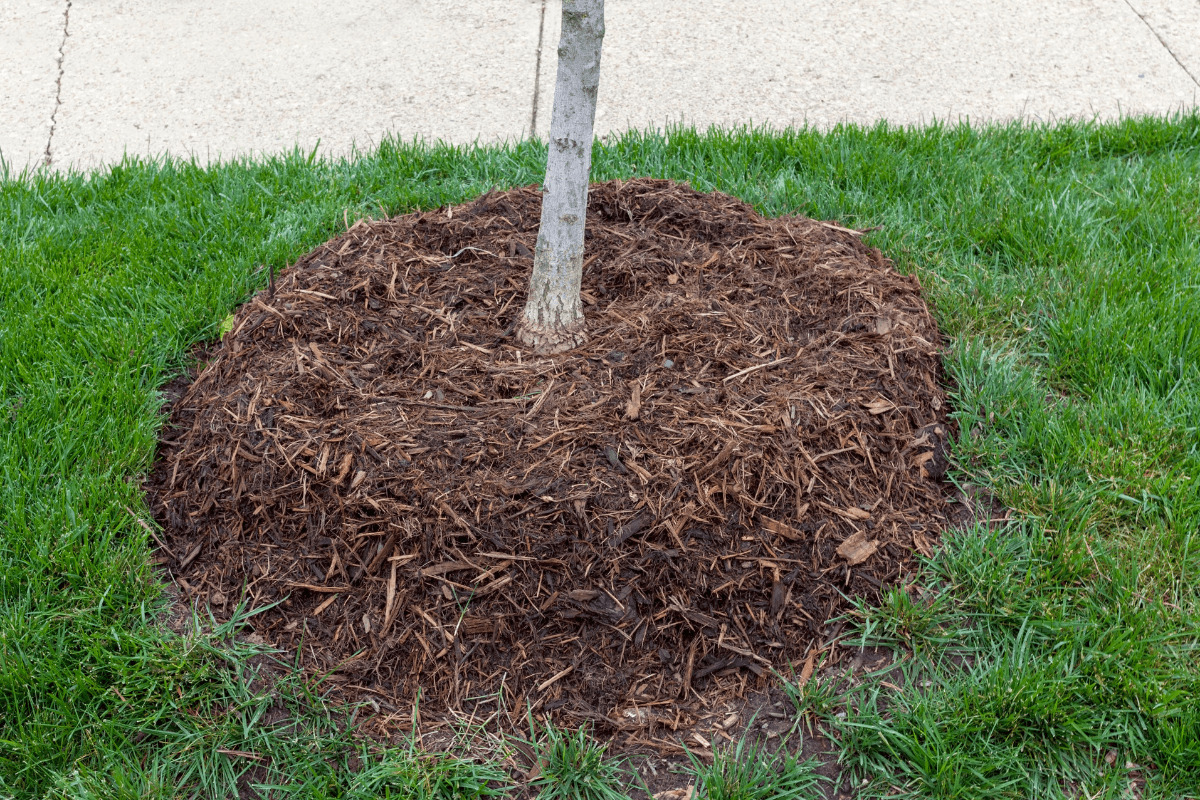
Brown mulch is a type of decorative mulch that’s typically made from bark or wood chips. It can be used in gardens, landscaping, and around trees to help retain moisture, suppress weeds, and improve the overall appearance of the area. Here are some tips for using brown mulch:
- Choose the right location: Brown mulch is best used in areas where you want to add some visual interest or where you want to suppress weeds. It’s not recommended for use in areas where you will be planting vegetables or other edible crops, as it can contain chemicals that are harmful to plants.
- Prepare the area: Before applying the mulch, be sure to remove any weeds or debris from the area. If you are using brown mulch around trees, make sure to leave a few inches of space between the trunk of the tree and the mulch.
- Apply the mulch: Spread the brown mulch evenly over the area, being sure to cover any bare spots. If you’re using it around trees, aim for a layer at least 2-4 inches thick. For other areas, a layer that is 3-4 inches thick is generally sufficient.
- Water the mulch: After applying the mulch, be sure to water it well to help it settle into place and retain moisture. Water the mulch every few days, or as needed, to keep it moist.
- Refresh the mulch: As the mulch begins to break down over time, you may need to add more to keep the area looking fresh. Aim to refresh the mulch every year or so, depending on how quickly it breaks down in your specific climate and soil conditions.
Frequently Asked Questions about Brown Mulch
There is no inherent toxicity in brown mulch. However, it is important to ensure that the mulch you choose is made from natural, untreated materials, as some mulches may be treated with chemicals that can be harmful to plants and animals.
Many people prefer wood chips or bark mulch for a natural look in their garden. These types of mulch are made from tree trimmings and have a natural, rustic appearance. Other natural-looking options include straw, leaf mold, and pine needles.
No, brown mulch does not attract termites.
There is no evidence to suggest that brown mulch specifically attracts snakes. However, any type of mulch or dense ground cover can provide a suitable habitat for snakes and other small animals, especially if it is located near a source of food or water.
Mulch colors can fade over time due to exposure to sunlight. Non-dyed mulch may turn grayish in about one to two months, while dyed black or brown mulches may keep their color longer.
Wrapping Up
Brown mulch can be a useful addition to your garden for a variety of reasons. When choosing a type of mulch, be sure to consider factors such as the climate in your region, the needs of the specific plants in your garden, and your personal aesthetic preferences.
With a little research and experimentation, you can find the perfect mulch for your garden and enjoy all of the benefits it has to offer. It’s always better to use brown mulch for your garden to keep it healthy and attractive.
If you’d like to know more about other types of dyed mulches, check out our articles on black mulch and red mulch.






